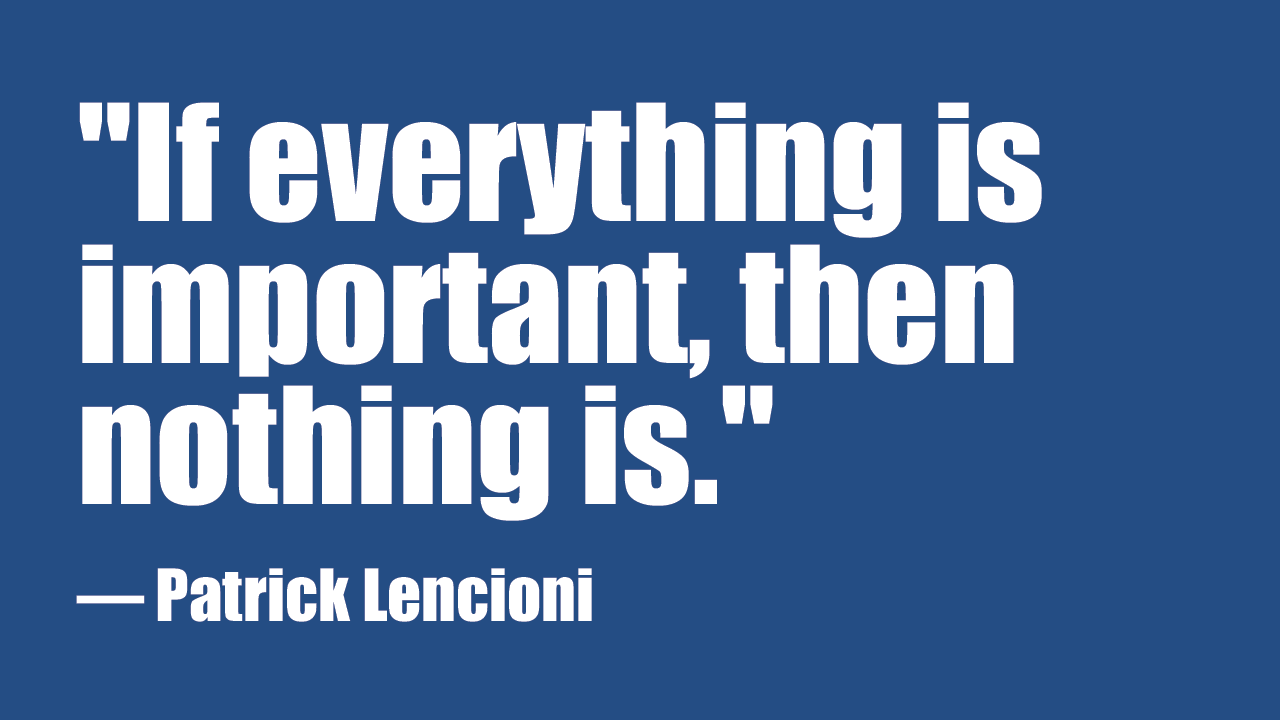“If everything is important, then nothing is.” ― Patrick Lencioni
And yet… how many meetings have you been in that have 37 P0s, and it’s not looking like you’re going to get out of next quarter with anything less than 34?
We get it, there’s always more that we could get done. More features to add. More sales calls to make. More customers to serve. But in a culture of more, more, more; it can get really hard for a team to know how to prioritize.
The problem is that by having too many priorities than would ever be feasible to accomplish, you’ve made an implicit signal that you’re not actually sure what the priorities are. And if you are sure but your team isn’t clear on what the most important thing is that needs to land, then you still have work to do to close that gap.
With 2022 ending in a blink of an eye, here are three strategies to deploy to clarify priorities and reduce thrash as we approach the end of the year. And while we’re at it, they’re equally effective for planning work in 2023 as well 🙂
Strategy 1: Align on 2-3 guiding principles you have that govern how you prioritize.
A strong set of team values governs how teams or organizations make decisions and signals how the team strives to operate. But if your team values are more on the aspirational side, or you don’t have team values mapped out yet, it’s helpful to nail down 2-3 guiding principles that give the whole team clarity on how prioritization decisions are made.
In tech, these kinds of principles are often centered around product quality and user experience. In a situation where there is limited bandwidth (#always) and a conversation comes up about adding more features to a product that might have to sacrifice sufficient time for user experience research or testing; having clear guiding principles of quality and experience can help teams negotiate how to move forward.
For example, “all front end engineering work must have design resources committed to it in order to be included,” or “# weeks per quarter must be spent on bug fixes and quality improvements.” These guidelines help ensure people don’t get overcommitted at the expense of what the team agreed was a priority as a whole.
Effective guiding principles around priorities allow decisions to be pushed down the organization, and empower teams to call the shots around their individual work. They foster trust in everyone being bought into the same criteria for what is important.
Strategy 2: Make it safe to have candid conversations about what cannot get done
If you have trouble saying “no” to things, you’re not going to like this tip. Prioritizing implies there are some things that will get done and some things that won’t. This means not getting swept up with all of the things you want to do and don’t have time for at the expense of having a realistic plan.
Your team will thank you in the long run for being realistic, and having a plan of the top 3-5 things that MUST get done, along with a stack ranked backlog of things you hope to accomplish if there is bandwidth. If you create an environment where it’s not ok to say “no,” people will not be forthcoming about risks or concerns and you set yourself up for people covering mistakes and avoiding flagging risks while there is still time to mitigate them.
Speaking in terms of risk management helps align the conversation around a shared goal and makes the conversation more objective. What are the risks, what are the proposed mitigations and pros/cons to each, what are alternatives, who are the owners of the mitigations? Make it safe for people to voice concerns about bandwidth and resources in a way that discusses options and ideas; talk about load balancing, and opportunities for people to work in a more agile way to adapt to unexpected needs.
Strategy 3: Discuss the mechanism for evaluating trade offs
Speaking of tradeoffs… What happens when you have a meticulously laid out plan and get an email from a stakeholder or executive asking you to go a whole other direction. Since this literally ALWAYS happens, it’s critical to regularly communicate your top priorities up the chain to ensure what you think is most important is also what’s most important to the organization.
Before you set the course on your plan, you also need clarity around how you evaluate tradeoffs. Is there a set of senior leaders in the organization who when they ask for something, it has to get done. Ok great – what happens with the work that was already committed to? We often have a lot of comfort saying “yes” in teams, but when we keep adding things beyond capacity, we haven’t always built the comfort saying what has to fall off the list. Or, we do it in a way that signals frustration and don’t demonstrate our problem solving skills.
When talking about tradeoffs, just like with negotiating, aim to get to a win-win situation. It’s often possible to get the most important elements of the new priorities done, and skip some of the least important things from the initial set of work. Are there people on the team who can rotate in to tackle unforeseen priorities, giving them the extra benefit of exposure to senior leadership; and since it’s a rotation and kept as a sprint as opposed to a marathon, they don’t get burned out? Tradeoffs look different on every team, but if we don’t talk about how we think about tradeoffs and what we will do when faced with them, the team will often feel like they’re being thrashed every time a new request comes in.
To wrap
If your team isn’t clear on what their priorities are, it signals a communication gap. Even if we feel like we’ve told people a million times, when it comes to setting a direction on a team and aligning people around high level priorities, repetition doesn’t spoil the prayer. Effective teams internalize their priorities, understand how their individual work ladders up to them, and what to do if something new comes up that they need to weigh their bandwidth against. Together, this understanding fosters a strong sense of accountability because people are bought into the what and the how of getting things done, and know where they fit into the equation.
**
To learn more about how I can support your team in establishing a clear prioritization framework, build more accountability in processes, and talk tradeoffs, reach out to: lia@liagarvin.com!


